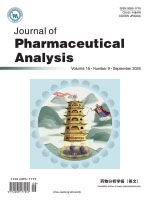2018 Vol. 8, No. 4
Display Method:
2018, 8(4)
Abstract:
2018, 8(4): 210-218.
Abstract:
2018, 8(4): 219-225.
Abstract:
2018, 8(4): 226-233.
Abstract:
2018, 8(4): 250-257.
Abstract:
2018, 8(4): 258-264.
Abstract:
2018, 8(4): 265-270.
Abstract:
2018, 8(4): 271-276.
Abstract:



